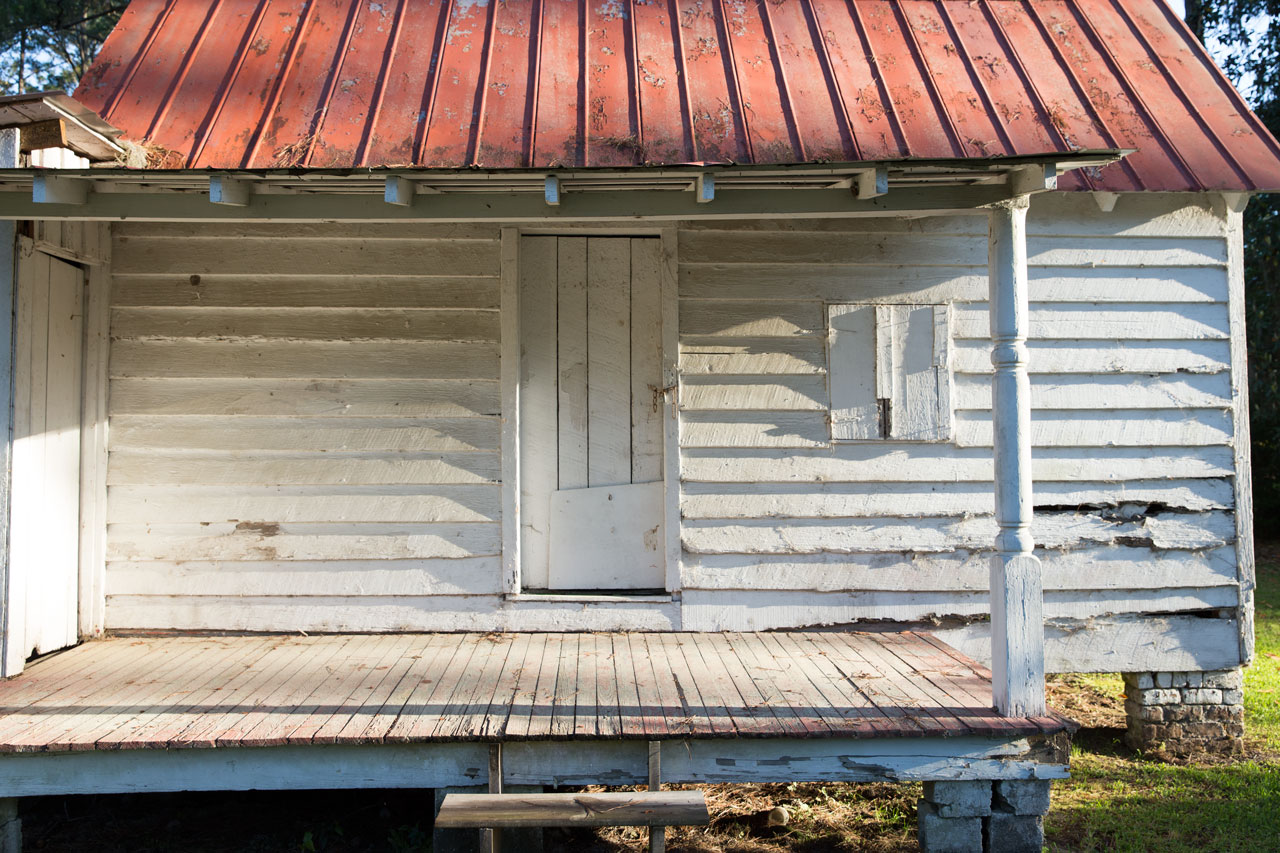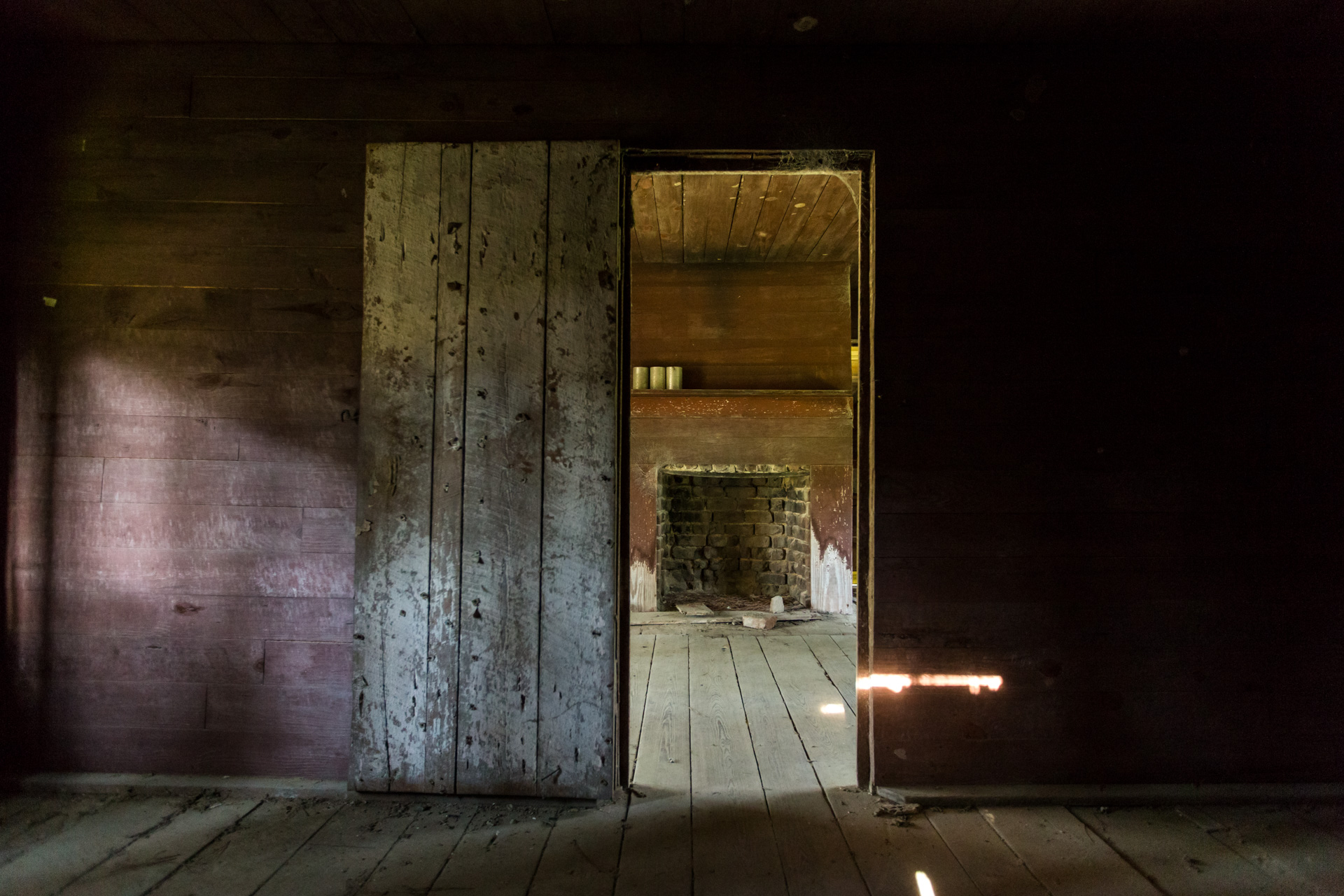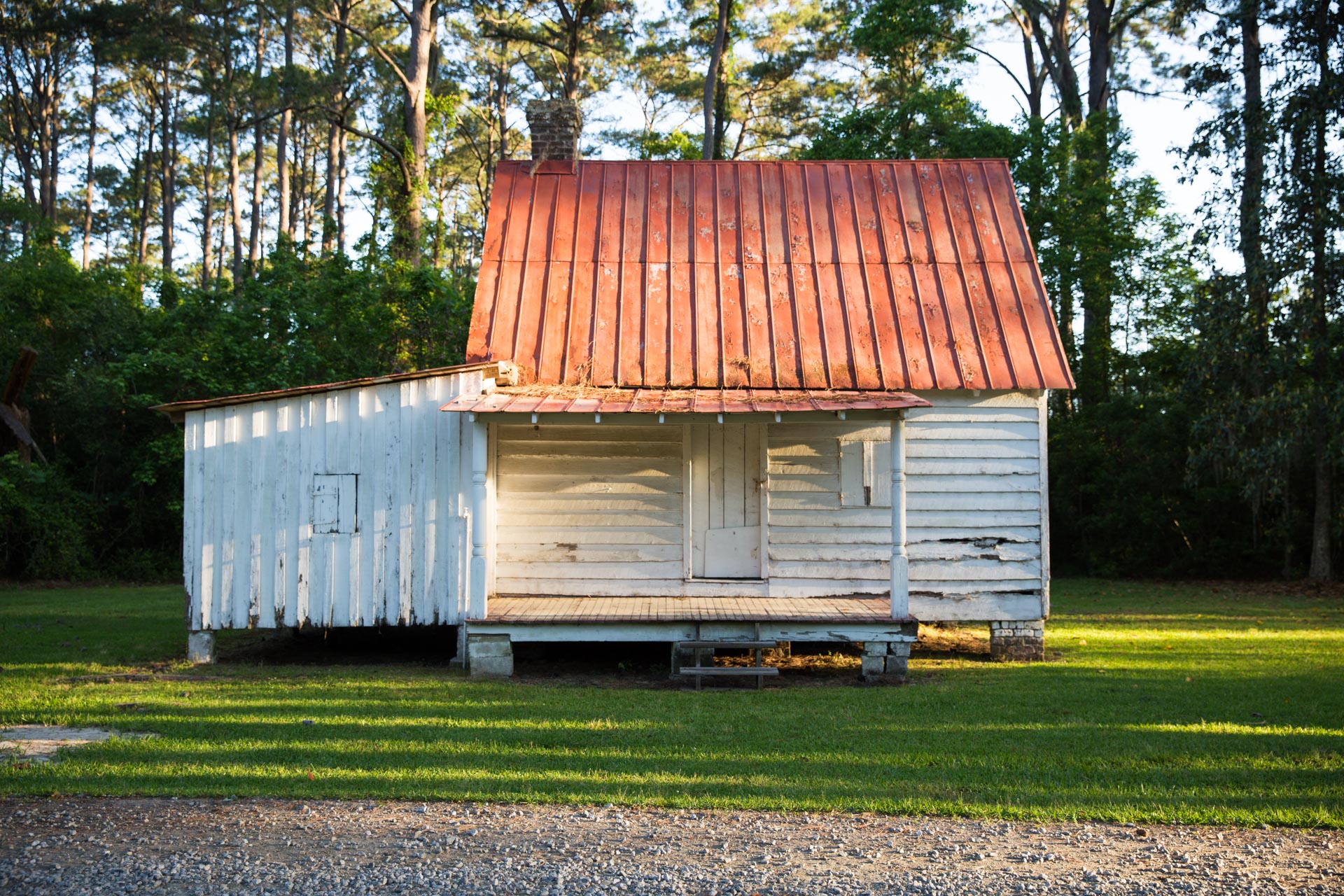

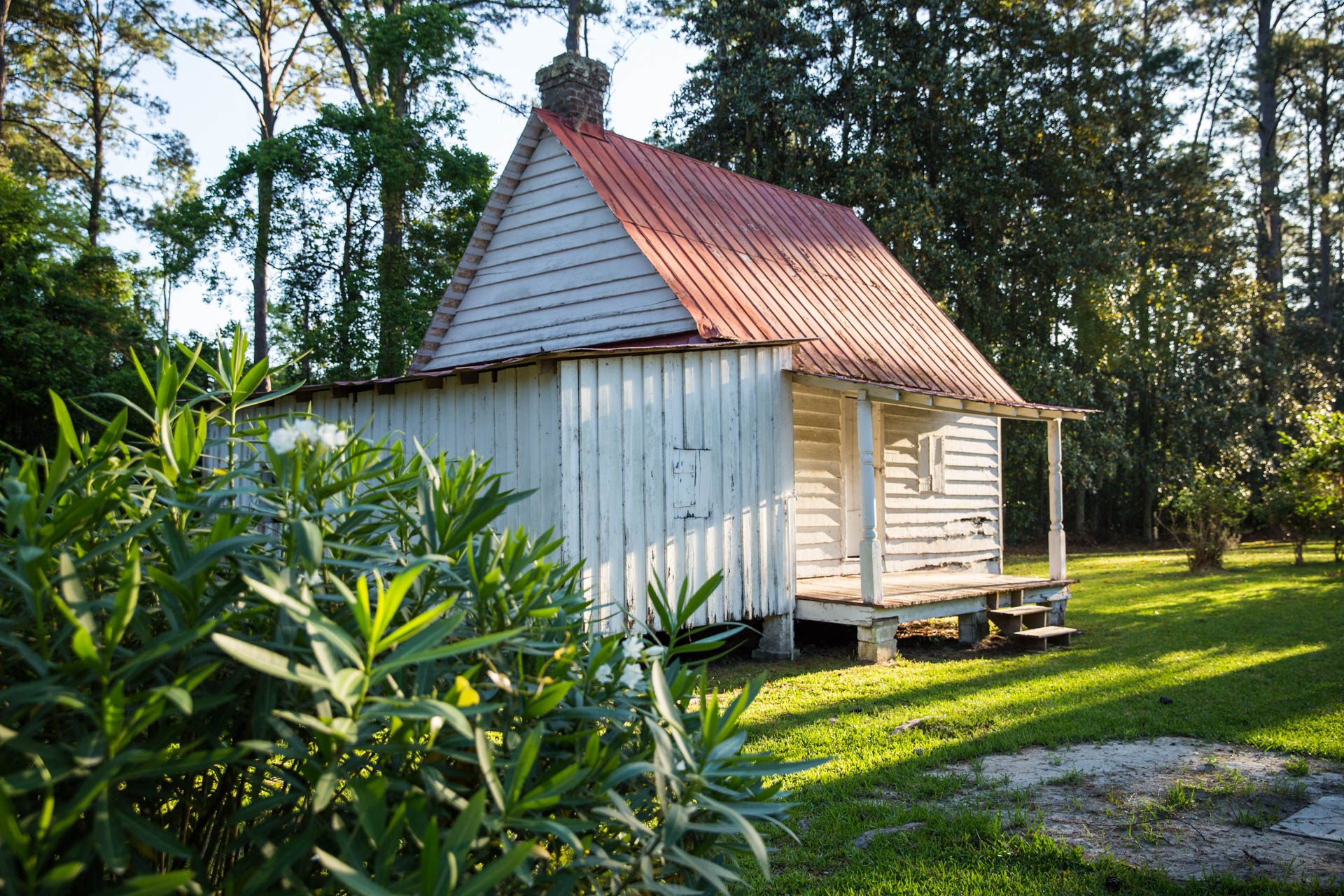
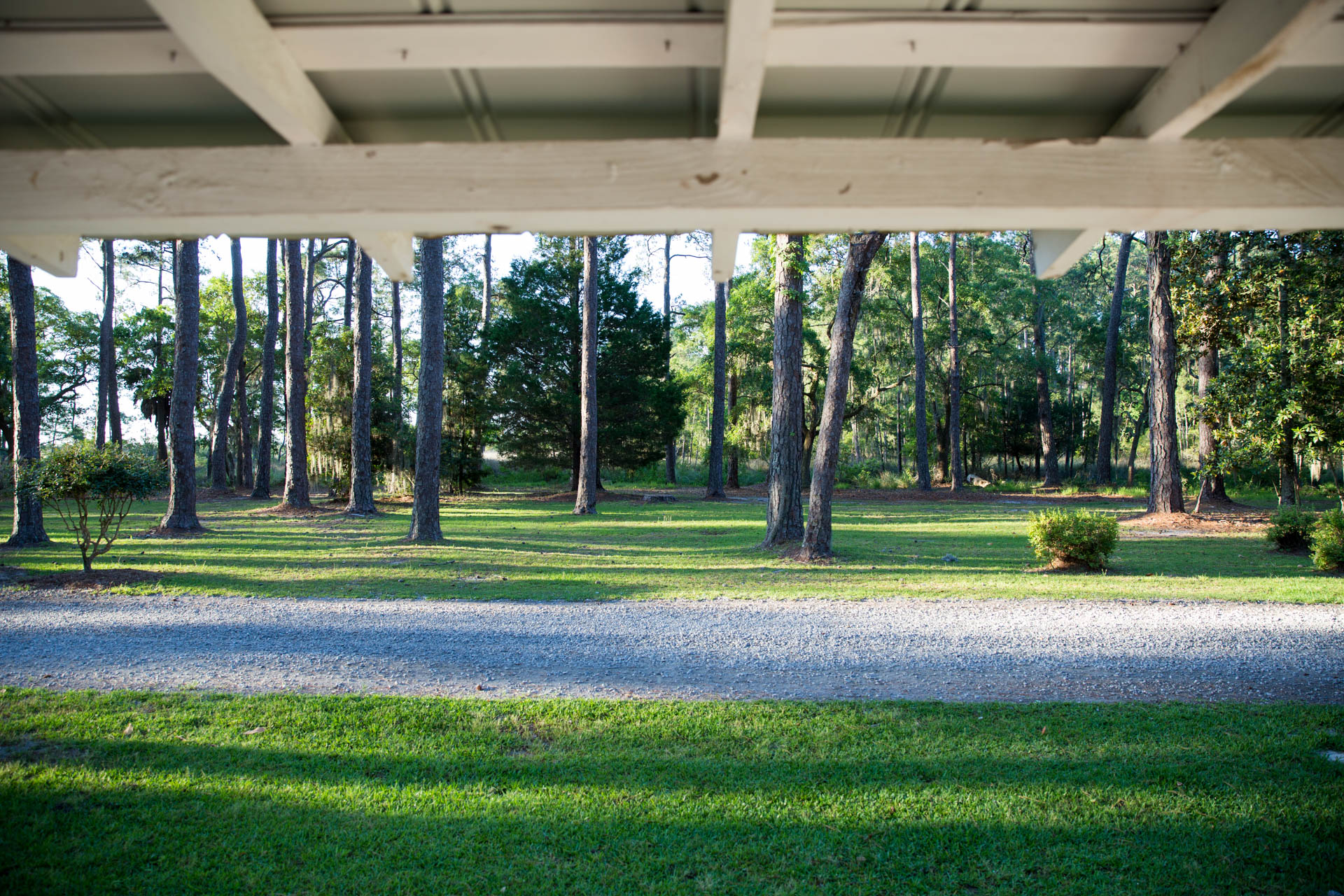
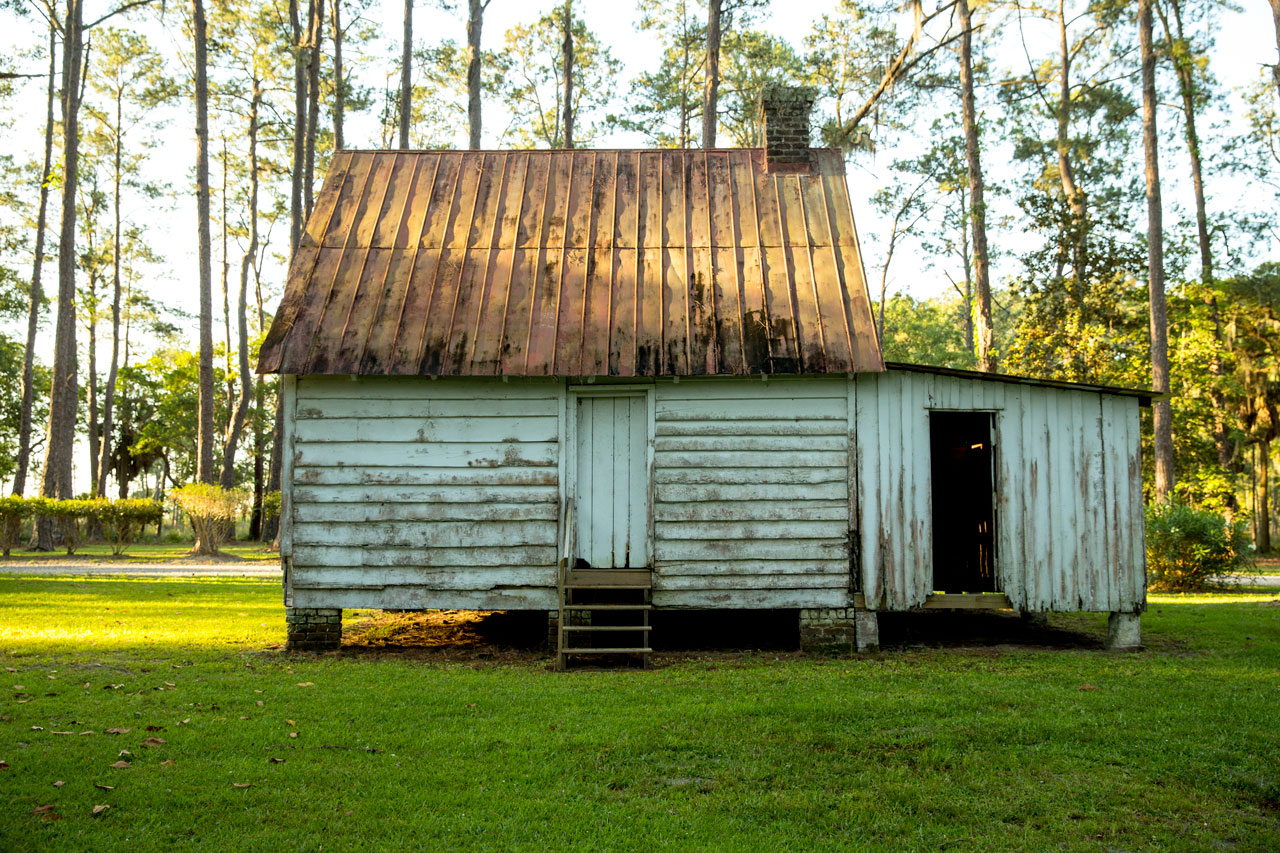
Take A Tour
The Driver's House
remnants of an era long perished
The road from the front gate to the main house used to have rows of small houses lining both sides. These dwellings were quarters of the many slaves who worked the rice fields.
After slavery was abolished, the houses were inhabited by servants working at Grove Point throughout the years. The structures dwindled away as time progressed. Some caught fire, others had to be demolished due to age and disrepair.
The Driver's House is one of two remaining buildings on the property and stands as a reminder of the South's bitter past.
Construction
Each house was built on a raised foundation of Savannah Gray Brick. During these times, brick was not purchased, it was made by hand on the premises of any property.
Mud was dug out of the marsh, mixed with straw, put into wood-framed moulds and left to set. Once the bricks were dry, they were then fired in a kiln to solidify and strengthen. A fireplace, central to each building, was also masoned with same material.
The rest of the structures were constructed of heart pine. Metal nails were expensive and hard to come by. So, wooden boards were fastened by the mortise and tenon method. Square holes were fashioned on one board and a matching tongue was crafted on another. The two would then be married to create a tight joint without the need for additional components.
The roofs were most likely shingled with cedar or white oak shake. The oils in the cedar wood would help protect from rot and weathering.
Glass was a luxury item and also hard to come by. For that reason, all windows were purely openings in the walls and were set with shutters that closed to protect from the elements.
The insides of the shutters were painted with a color known as "Haint Blue". Throughout the South, this bright and pleasing hue can often be found around the doors, windows and porches of old buildings. It is said that the color will ward off "haints"—the spirits of the dead who could not move on from the physical world. It is also rumored that the color repels insects and spiders. Some say that the color sends off an uncomfortable vibration that thwarts pests. Others claim that it mirrors the sky and fools bugs into thinking there is no space to crawl. A more scientific theory references old paint making methods. Lye was often mixed to make exterior paint—and it is also a known pesticide.
Want to learn even more? The Grove Point staff has a great deal more history to share. Request a tour or ask a question anytime.

